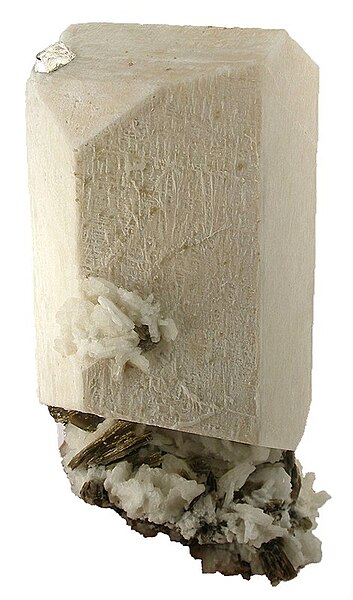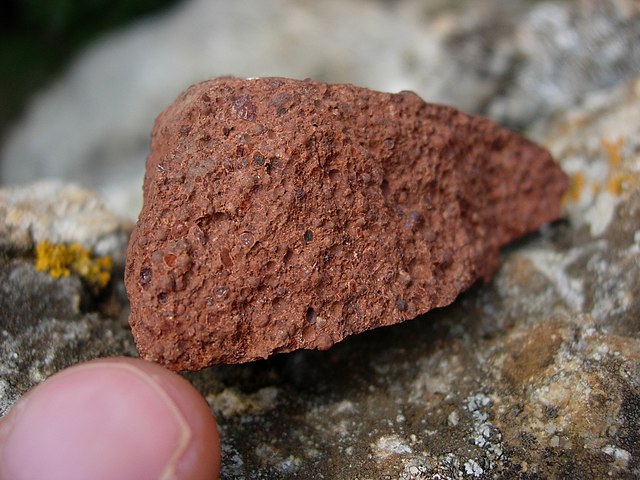Feldspar is a group of rock-forming aluminium tectosilicate minerals, also containing other cations such as sodium, calcium, potassium, or barium. The most common members of the feldspar group are the plagioclase (sodium-calcium) feldspars and the alkali (potassium-sodium) feldspars. Feldspars make up about 60% of the Earth's crust, and 41% of the Earth's continental crust by weight.
Feldspar crystal 18 cm × 21 cm × 8.5 cm (7.1 in × 8.3 in × 3.3 in) from Jequitinhonha valley, Minas Gerais, southeastern Brazil
Specimen of rare plumbian (lead-rich) feldspar
Crystallized white feldspar, with an upright 4 cm aquamarine crystal perched on it
Feldspar and moonstone, from Sonora, Mexico
Aluminium is a chemical element; it has symbol Al and atomic number 13. Aluminium has a density lower than that of other common metals, about one-third that of steel. It has a great affinity towards oxygen, forming a protective layer of oxide on the surface when exposed to air. Aluminium visually resembles silver, both in its color and in its great ability to reflect light. It is soft, nonmagnetic, and ductile. It has one stable isotope, 27Al, which is highly abundant, making aluminium the twelfth-most common element in the universe. The radioactivity of 26Al, a more unstable isotope, leads to it being used in radiometric dating.
Aluminium
Bauxite, a major aluminium ore. The red-brown color is due to the presence of iron oxide minerals.
Friedrich Wöhler, the chemist who first thoroughly described metallic elemental aluminium
The statue of Anteros in Piccadilly Circus, London, was made in 1893 and is one of the first statues cast in aluminium.








